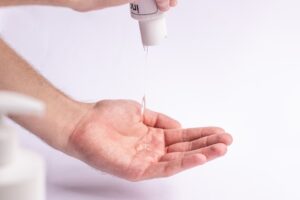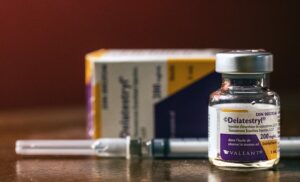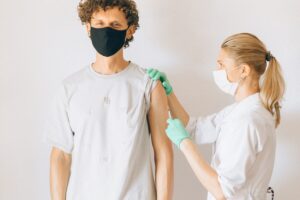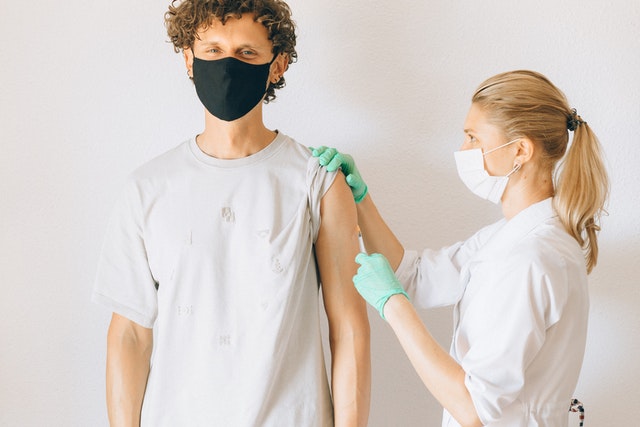Testosterone is a hormone that plays a critical role in sperm production, bone and muscle mass, and even red blood cell production. However, testosterone levels decrease with age, leading to low sex drive, depression, weight gain, and more.

Testosterone therapy is a standard treatment for men with low testosterone levels. It comes in many different treatment forms, each with pros and cons.
Low testosterone levels can be treated by undergoing testosterone replacement therapy (TRT). One can undertake various TRT by visiting a doctor or seeking professional online testosterone therapy. However, the most suitable one depends on your personal preference, lifestyle, and goals.
Before determining which is the most effective form of testosterone replacement therapy, let’s look at the most common types of replacement therapy for low testosterone and how they measure up against one another.
Table of Contents
Confirm Your Testosterone Levels First
Before you start taking any testosterone replacement therapy, you’ll want to confirm that you actually have low testosterone and aren’t just going through a normal aging process. This is because all the different types of testosterone therapies have pros and cons, and it would be a shame to start taking one type of therapy and then find out down the road that it wasn’t appropriate for you after all.
There are several ways that your doctor can evaluate your testosterone levels to determine if they are “low” or normal. The gold standard is a blood test that measures your total testosterone and your “free” or unbound testosterone levels.
Types of Testosterone Replacement Therapy
There are multiple forms of testosterone replacement therapy, but the most common include the following four types.
Testosterone Patches
Testosterone patches are an excellent option for men with low testosterone. They are applied to the skin and provide a slow, continual release of testosterone into the body. The benefit of a testosterone patch is that it is applied once a day and doesn’t require any daily maintenance like other forms of therapy.
The downsides of a testosterone patch are that it’s only available as an “off-label” use in the US, meaning it is neither FDA-approved nor covered by health insurance.
Also, the amount of hormones reaching your bloodstream is less consistent than with gels or injections. This can cause fluctuations in your testosterone levels and make it difficult to manage your symptoms.
Testosterone Gels
Testosterone gels are applied to the skin once or twice a day. The amount that enters the bloodstream is high enough to be effective, but not so much that it causes side effects. Gels are easy to use and widely available, with many insurance companies covering the cost of the therapy.

Considering the gels are applied to the skin, there is a risk that you could transfer it to someone else (e.g., a partner or child) if you don’t wash your hands thoroughly. Moreover, gels can also cause skin irritation and a burning sensation, which is why they are often packaged with a cooling pad to help ease the pain.
Testosterone Injections
Testosterone injections are given once or twice a week and are the “gold standard” of testosterone treatment. They are considered the most effective type of testosterone therapy and are used as a treatment for low testosterone, mainly due to age.

Testosterone injections are also the most expensive replacement therapy, but insurance often covers most costs. A healthcare provider administers these Injections and is usually dosed at a high enough level to suppress your natural testosterone production for 24 hours.
This means you have to plan your activities for the next day around the timing of your next injection. Although inconvenient, this delivery method reduces the risk of side effects associated with long-term topical or gel products, such as skin irritation. Injections are often prescribed as a course of treatment that may last between 3 and 6 months, depending on the patient’s needs.
Testosterone Cream
Testosterone creams are not as effective as other types of therapy, but it is still a viable option for men looking to boost their testosterone levels. Creams are applied to the skin and slowly release testosterone into the body.
Some creams contain a small amount of testosterone, while others use a synthetic form of the hormone that mainly acts as a carrier for the synthetic version. Creams are non-invasive and easy to use. They are cheaper than other types of replacement therapies but are also less effective.
Which is the Best Form of Testosterone Replacement?
To determine which form of testosterone replacement therapy is best for you, you’ll want to consider your lifestyle and preferences. For example, if you have a partner or family members you come in contact with daily, you might want to avoid creams, patches, and gels because of the transfer risk.
Moreover, if you frequently travel for business, you might want to avoid gels because they can be messy if you don’t keep them clean and dry after each application. Testosterone patches are easy to use, but because the amount of hormone reaching the bloodstream is lower than in other types of therapy, they may not be as effective in treating low testosterone levels.

However, based on the analysis of all the forms of TRT, testosterone injections are considered the best form of testosterone replacement for several reasons:
- They are more effective and fast-acting than all testosterone replacement forms. This is because they are injected directly into the muscles and absorbed into the bloodstream almost immediately, making it easier to feel the benefits faster.
- They are safe and more effective than all external testosterone replacement methods.
- They carry low risks of spreading testosterone through skin contact to those around you because they are injected directly into the tissue muscles.
Final Thoughts
Testosterone replacement therapy is an effective way for men to deal with the normal aging process and the drop in testosterone that comes with it. With so many different therapy types, you’re sure to find one that meets your needs, carries fewer side effects, and is easy to use. Whether you opt for injections, patches, gels, or a different type of therapy altogether, the important thing is that you get your testosterone levels checked and start taking action as soon as possible. The sooner you treat low testosterone, the better your health and well-being will likely be in the long term.











